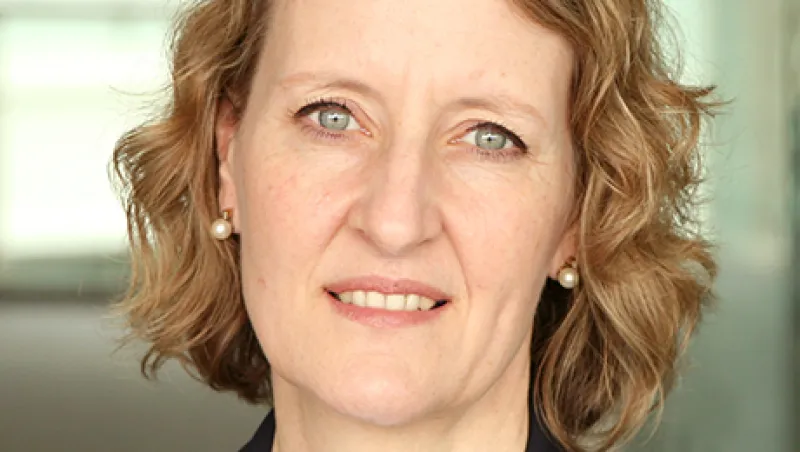Until recently, investors seeking to inject social and environmental responsibility into their portfolios have had little choice but to shop for equities. But with help from some major players, sustainable fixed-income products are on the rise. BNP Paribas recently named Stephanie Sfakianos its first head of sustainable capital markets, becoming the latest investment bank to throw its weight behind such offerings. Social and environmental investing “is moving from the equity world to the fixed-income world, and it’s moving extremely quickly,” London-based Sfakianos says. “We want to make sure that we have a very clear presence in this market.”
The swift growth of use-of-proceeds green bonds has helped convert big financial firms. These bonds address environmental protection by channeling money to green projects and tying risk and return to the full balance sheet of an issuer like the World Bank Group, which helped develop them and still dominates the market along with a few other supranationals. This year will see $20 billion worth of green bond issuance, Bank of America Merrill Lynch projects, a number that would double the market’s size. In January, BofA Merrill, Citigroup, Crédit Agricole Corporate & Investment Bank and JPMorgan Chase & Co. published a draft of their Green Bond Principles, a set of voluntary guidelines for issuing such paper. The goal of the principles is not to define what counts as green but to encourage transparency around any project supported by the bonds.
As the sustainable-bond market takes shape, new players have stepped forward. Last June, as part of a $670 million general offering, Massachusetts floated the first municipal bond labeled green by its issuer. In a statement the Office of the State Treasurer said it would use the proceeds from the $100 million bond to back “environmentally sound” infrastructure projects. In March, Toyota Financial Services offered what it called “the auto industry’s first-ever asset-backed green bond,” upping the issue to $1.75 billion from $1.25 billion after strong institutional demand. That same month Anglo-Dutch consumer goods giant Unilever announced a £250 million ($416 million) green bond offering. Toyota will steer the proceeds toward funding development of vehicles that meet certain fuel efficiency and emissions standards; Unilever will invest in new factories and retrofits to reduce waste, greenhouse gas emissions and water use.
For now, BNP Paribas’s Sfakianos says her team’s main concern is understanding exactly what institutional investors want from green bonds, with a view to share that information with issuers. The French bank’s clients are also interested in products with links to education, community building and best practices in corporate governance, she adds: “What’s called a sustainable bond has almost as many definitions as there are investors, and what we’re trying to do is put together a picture that enables the issuer to make a commonsense decision about what they’re trying to achieve.”
BofA Merrill also aims to get ahead of its peers in sustainable fixed income, says Suzanne Buchta, New York–based global co-head of green debt capital markets. In November the bank announced its own $500 million green bond for investments such as renewable-energy projects. Investment banks and issuer clients see green bonds as a way to diversify their funding sources, notes Stephen Liberatore, a managing director and fixed-income portfolio manager at $564 billion, New York–based investment firm TIAA-CREF: “That’s especially true for entities that may not have been somebody historically that socially responsible investors would have looked for.”
Liberatore cites Exelon Corp., a Chicago-based energy producer and distributor that many such investors would shun because it runs nuclear plants. Last September, Exelon created a separate entity called Continental Wind that houses much of its wind farm portfolio; the subsidiary issued a $613 million project-financing bond structured as a 20-year, 6 percent senior secured note and rated BBB– by Fitch Ratings.
At TIAA-CREF, Liberatore oversees $5.7 billion in fixed-income strategies to which the firm applies social criteria, including the Social Choice Bond Fund, a $100 million mutual fund that invests about 10 percent of its capital in bonds deemed to have a direct and measurable social and/or environmental impact. The actively managed fund focuses on four areas: affordable housing, community and economic development, renewable energy and climate change, and natural resources. TIAA-CREF’s Social Choice Bond Composite, which averages the performance of the Social Choice Bond Fund and a similar $100 million separate account, had posted a three-year annualized return of 4.14 percent through last December, versus 3.26 percent for the Barclays U.S. Aggregate Bond Index.
Liberatore thinks fixed income may be especially well suited to help investors back projects that drive environmental and social solutions. “While we don’t have the vote on the fixed-income side like equity investors do, we are the funding source for these entities, and we do have the ability to get them to engage or try to change behavior or focus on other areas,” he says. • •






